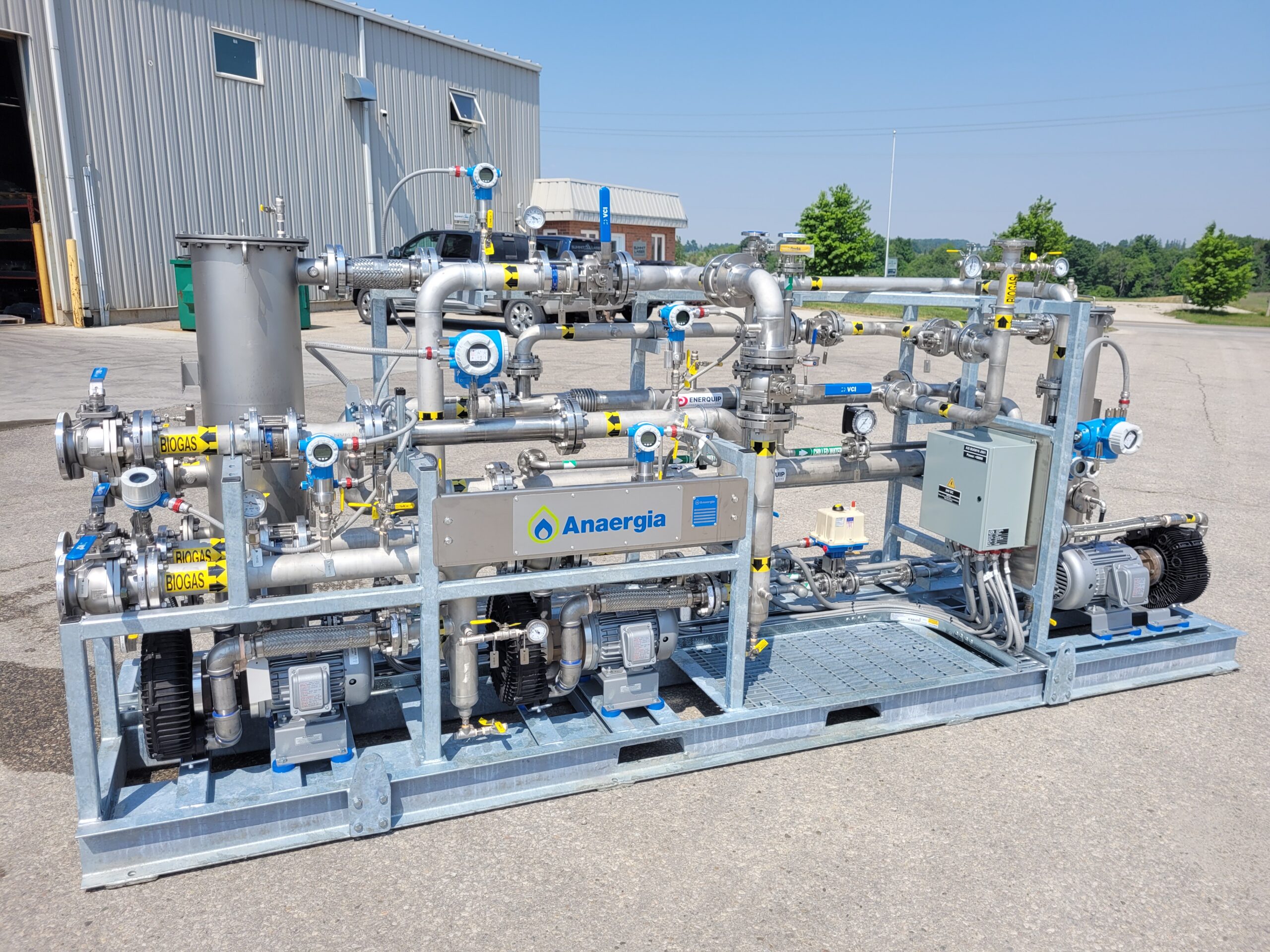With support from the Ontario Water Consortium’s Water Industry Growth Program, Anaergia is transforming waste into renewable energy, leading the charge in combating climate change with their innovative biogas extraction technology.
Biogas can be a potent source of greenhouse gases — or a powerful weapon in the fight against climate change. Anaergia Inc. wants to make sure it’s used for the good of the planet.
As Sasha Rollings-Scattergood, Anaergia’s VP of Technology, explains, when you digest organic material anaerobically, you produce a mix of carbon dioxide and biomethane. Releasing this biogas into the atmosphere drives climate change. In fact, nearly half of global warming is due to methane, a greenhouse gas 84 times more powerful than carbon dioxide.
But if you capture the biogas and extract the biomethane, you’ve got a renewable, carbon-neutral replacement for natural gas. A lot of wastewater treatment plants already use the biomethane produced from sludge digestion to generate heat and electricity. But why stop there, Anaergia’s experts wondered.
The Burlington-based company has developed a platform of technologies that can extract liquefied organics from a variety of feedstocks. They knew wastewater treatment plants tend to have a lot of unused digestion capacity. They also knew that far too much food waste — from apple cores to used fryer grease — ends up in landfills. So why not take that organic material, liquefy it and add combine it with the wastewater sludge?
“Municipal wastewater treatment plants have a great opportunity ahead of them. They’re already, in a lot of cases, producing some biogas. They could produce a lot more if they co-digested with food waste,” says Rollings-Scattergood.
Producing more biomethane could allow these energy-hungry facilities to completely offset their fuel and electricity consumption. However, it’s not as simple as liquefying the contents of household green bins and putting it into sludge digesters. That’s because biogas can contain a number of different contaminants, including hydrogen sulphide, siloxanes, ammonia, volatile organic compounds (VOCs) and moisture.
That meant Anaergia needed to develop a process for preconditioning the biogas before it gets used as a fuel.
Establishing the (pre)conditions for successful co-digestion
The award-winning company is already an expert at transforming waste into valuable resources, with projects and installations in 17 countries. But developing an effective preconditioning system required some research. For support, they turned to OWC’s Water Industry Growth (WIG) program, which helps bring innovative technologies to market sooner.
A key part of the project involved determining what sort of contaminants to expect in methane generated by decomposing food waste. To find out, Anaergia tested proxies for three different types of materials: fast-food fryer oil, unsold produce from grocery stores, and household food scraps.
These different feedstocks have dramatically different amounts of carbohydrates, proteins and lipids, Rollings-Scattergood says, and Anaergia needed to design a system flexible enough to handle all of them. So their R&D team put them into lab-scale digesters and then characterized the resulting biogas to understand its chemical makeup.
That provided the information they needed to develop a prototype. The biogas conditioning system consists of several stages. First, a dehumidification process removes moisture and ammonia. Next, specific bacteria are deployed to tackle gaseous sulphur. Finally, activated carbon absorbs any remaining contaminants like siloxanes and VOCs.
This plug-and-play “system on a skid” is designed to be easily delivered, connected to electricity and gas lines and quickly put to work. Following successful lab tests, Anaergia is now preparing to collect data from their premiere installation with the Town of Petawawa’s municipal wastewater treatment plant.
Creating a Canadian first
“We really are innovating here,” says Rollings-Scattergood. “This is the first of its kind in Canada.”
That made support from technology-development programs like WIG absolutely crucial, allowing Anaergia to take on challenges they couldn’t otherwise. “We may not have entered into this space if we didn’t have the opportunity to de-risk it,” he says.
With the biogas preconditioning equipment now installed in Petawawa and dry commissioning completed, their next step is to select which food waste to trial. By the end of the year, they expect to have their system up and running, providing fodder for compelling case studies and a demonstration site to get industry leaders excited about co-digestion possibilities.
“The whole aim with the WIG was to do the underlying development so that we can roll this out to other municipal wastewater treatment plants,” Rollings-Scattergood explains.
And as he points out, there are plenty of reasons for excitement. Taking advantage of extra capacity at existing treatment facilities. Increasing renewable biogas production. Reducing the enormous amount of greenhouse gas emissions created by food waste. The list goes on.
“There’s a major opportunity here,” says Rollings-Scattergood. “And I believe more and more progressive wastewater treatment plants are accepting and realizing that they really do have a resource on their hands, and they shouldn’t waste it.”
WIG supports industry innovations that accelerate growth, create jobs and strengthen Ontario’s water sector. For more information, click here.


